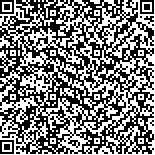| Quote
: |
贺海霞,易健,李丹丹,盛望,佘颜.血管性痴呆患者中医证型与炎症因子相关性分析[J].湖南中医药大学学报英文版,2018,38(12):1403-1406.[Click to copy
] |
|
| |
|
|
| This paper
:Browser 2605times Download 1326times |
| 血管性痴呆患者中医证型与炎症因子相关性分析 |
| 贺海霞,易健,李丹丹,盛望,佘颜 |
| (湖南中医药大学第一附属医院, 湖南 长沙 410007;湖南中医药大学, 湖南 长沙 410208) |
| 摘要: |
| 目的 探讨血管性痴呆患者中医证型与炎症因子的相关性。方法 选择2015年1月至2018年1月在本院接受治疗的165例血管性痴呆患者及同期健康体检者40例进行研究。根据患者中医证型将其分为4组,痰浊阻窍证组41例,肾精亏虚证组40例,瘀血阻络组43例,肝阳上亢组41例。所有患者均采用真空负压管抽取清晨空腹肘静脉血5 mL,检测白介素-1(interleukin 1,IL-1)、白介素-6(interleukin 6,IL-6)、白介素-8(interleukin 8,IL-8)、C反应蛋白(C-reaction protein,CRP)、肿瘤坏死因子(tumor necrosis factor α,TNF-α)等炎症因子水平。结果 4组患者各炎症因子水平均明显高于对照组(P<0.05);痰浊阻窍组IL-1、IL-8明显高于肾精亏虚组及肝阳上亢组,IL-6明显高于肾精亏虚组及瘀血阻络组,CRP明显低于肾精亏虚组、高于瘀血阻络组,TNF-α高于肾精亏虚组、瘀血阻络及肝阳上亢组(P<0.05)。相关性分析结果显示各中医证候严重程度均与炎症因子水平呈正相关关系(r>0,P<0.05),且痰浊阻窍证组与各炎症因子水平相关性均高于其他组。结论 肾精亏虚证、痰浊阻窍证、瘀血阻络证、肝阳上亢证血管性痴呆患者炎症因子水平均明显高于健康患者,且各证型严重程度均与炎症因子水平成正相关关系,其中以痰浊阻窍型血管性痴呆患者严重程度与炎症因子相关性最强。 |
| 关键词: 血管性痴呆 中医证型 炎症因子 相关性 |
| DOI:10.3969/j.issn.1674-070X.2018.12.011 |
| Received:May 19, 2018 |
| 基金项目:国家自然科学基金青年科学基金项目(81603415),湖南省教育厅项目(15C1048)。 |
|
| Correlation Between TCM Syndrome Types and Inflammatory Factors in Patients with Vascular Dementia |
| HE Haixia,YI Jian,LI Dandan,SHENG Wang,SHE Yan |
| (The First Affiliated Hospital of Hunan University of Chinese Medicine, Changsha, Hunan 410007, China;Hunan University of Chinese Medicine, Changsha, Hunan 410208, China) |
| Abstract: |
| Objective To investigate the correlation between traditional Chinese medicine (TCM) syndrome types and inflammatory factors in patients with vascular dementia.Methods A total of 165 patients with vascular dementia who were treated in our hospital from January 2015 to January 2018 and 40 healthy volunteers who underwent physical examination during the same period of time were enrolled for the study. According to the TCM syndrome type, the patients were divided into turbid phlegm obstructing orifices group with 41 patients, kidney-essence deficiency group with 40 patients, blood stasis obstructing the collaterals group with 43 patients, and upper hyperactivity of liver Yang group with 41 patients. A vacuum negative-pressure tube was used to collect 5 ml fasting blood from the cubital vein in the morning to measure the levels of related inflammatory factors including interleukin-1 (IL-1), interleukin-6 (IL-6), interleukin-8 (IL-8), C-reactive protein (CRP), and tumor necrosis factor-α (TNF-α).Results The four groups of patients had significantly higher levels of inflammatory factors than the control group (P<0.05). The turbid phlegm obstructing orifices group had significantly higher levels of IL-1 and IL-8 than the kidney-essence deficiency group and the upper hyperactivity of liver Yang group, a significantly higher level of IL-6 than the kidney-essence deficiency group and the blood stasis obstructing the collaterals group, a significantly lower level of CRP than the kidney-essence deficiency group, a significantly higher level of CRP than the blood stasis obstructing the collaterals group, and a significantly higher level of TNF-α than the kidney-essence deficiency group, the blood stasis obstructing the collaterals group, and the upper hyperactivity of liver Yang group (P<0.05). The correlation analysis showed that the severity of each TCM syndrome was positively correlated with the levels of inflammatory factors (r>0, P<0.05), and the syndrome of turbid phlegm obstructing orifices had a stronger correlation with the levels of inflammatory factors than the other syndrome types.Conclusion The patients with the syndrome of turbid phlegm obstructing orifices, kidney-essence deficiency, blood stasis obstructing the collaterals, or upper hyperactivity of liver Yang have higher levels of inflammatory factors than healthy volunteers, and the severity of each syndrome is positively correlated with the levels of inflammatory factors. The patients with the syndrome of turbid phlegm obstructing orifices have the strongest correlation between syndrome severity and the levels of inflammatory factors. |
| Key words: vascular dementia TCM syndrome type inflammatory factor correlation |
|

二维码(扫一下试试看!) |
|
|
|
|


